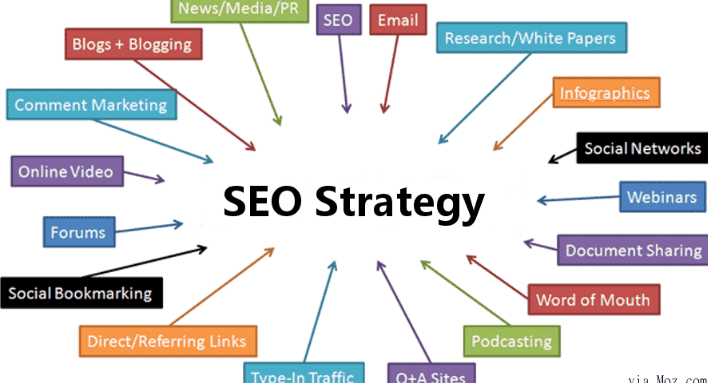what is an seo strategist: introduction
A SEO marketing consultant is a person who can beautify the internet site and its content material cloth to beautify the rating and visibility of internet websites on SERPs. The goal of a seek engine advertising strategist is to get organic (non-paid) visitors to return to an internet page to make it seem more appealing to engines like Google like Google, Bing, and Yahoo. Here’s an in-depth look at what a SEO strategist does and the important thing components of their characteristic:
Key Responsibilities of a Search Engine Advertising Strategist
Keyword Research and Analysis:
We identify keywords by researching and determining the most relevant and high-traffic critical terms related to the enterprise, merchandise, or offerings.
Competitor Analysis:
Analyzing competitors’ key phrases and techniques to locate possibilities for the internet site.
Keyword Mapping:
Assigning key phrases to unique pages on the website to ensure each internet web page is optimized for relevant seek phrases.
On-page SEO:
Content Optimization:
Ensuring the website’s Content is rich in crucial phrases without spamming. This includes optimizing headlines, meta descriptions, and body textual content.
Technical SEO:
Improving the website’s technical elements, collectively with website tempo, cellular responsiveness, and URL shape.
Internal Linking:
Strategically linking internal pages to decorate site navigation and distribute link fairness at some point of the internet site.
Off-Page SEOMarketing Strategies:
Link Building:
Acquiring brilliant one-way links from authentic net sites to decorate the website’s authority and rating.
Social Media Integration:
Leveraging social media systems strengthens site visitors and constructs brand cognisance.
Guest Blogging and Outreach:
Writing articles for other websites and contacting influences to benefit one-way links and exposure.

Content Strategy and Development:
Content Creation:
Developing superb, attractive, relevant content material that meets the target audience’s needs.
Content Calendar:
Planning and scheduling content releases to preserve a steady drift of sparkling content fabric.
search engine advertising Copywriting:
Writing content that is both customer-friendly and optimized for engines like Google.
Analytics and Reporting:
Performance Tracking:
Monitoring internet site traffic, score positions, and user behavior using equipment like Google Analytics, Google Search Console, and different seek engine marketing tools.
Reporting:
Creating unique opinions on music development and displaying the effectiveness of search engine marketing techniques to stakeholders.
O Data Analysis:
Analyzing data to understand trends, insights, and regions for development.
Staying Updated with SEO Trends:
Algorithm Updates:
Keeping up with modifications in seek engine algorithms and adjusting techniques for that reason.
Industry News:
Staying informed about new search engine marketing systems, techniques, and fantastic practices.
Continuous Learning:
Attending webinars, conferences, and workshops to decorate talents and expertise.
Skills Required for a SEO Strategist
Analytical Skills:
Ability to analyze facts and metrics to gauge the effectiveness of SEO strategies.
Technical Proficiency:
Knowledge of HTML, CSS, and simple internet improvement ideas.
Content Creation Skills:
Strong writing and editing skills for developingSEO-high-quality content material cloth.
Research Skills:
Proficiency in keyword studies and aggressive evaluation.
Strategic Thinking:
Ability to increase and enforce whole SEO techniques.
Communication Skills:
Excellent communique abilities for collaborating with customers, builders, and exclusive stakeholders.
Problem-Solving Skills:
Aptitude for identifying troubles and locating progressive solutions.
Tools Commonly Used with the aid of engine marketing Strategists
Google Analytics:
This is used to monitor new website carter behaviour.
Google Search Console:
This is used to track the average Performance of internet websites and identify issues.
SEMrush:
For keyword studies, competitor evaluation, and monitoring, seek engine advertising’s overall Performance.
Ahrefs:
For inbound link evaluation, keyword studies, and location audits.
For key-phrase
studies, seek engine advertising tracking and placement audits.
Screaming Frog:
This is used to conduct technical SEO audits and analyze site forms.
Yoast SEO:
A plugin for optimizing WordPress websites.
The Importance of a Search Engine Marketing Strategist
An influential SEO strategist can drastically impact a business’s online presence by way of the following:
Increasing herbal website traffic can motivate better conversion prices and income.
Enhancing logo visibility and credibility.
Providing a higher purchaser experience by optimizing website shape and Content.
Helping the economic corporation stay aggressive in an ever-changing digital landscape.
Crafting a content approach aligned with seek engine advertising
Crafting a content material approach aligned with search engine advertising and marketing includes a dependent approach to creating, distributing, and managing Content to achieve higher seek engine ratings and strengthen natural traffic. Here’s an in-depth guide on the manner to expand a powerful SEO-aligned content material method:
Define Your Goals
Identify Objectives:
Traffic Growth:
Increase the number of website visitors online.
Lead Generation:
Capture ability client information.
Brand Awareness:
Enhance the visibility and reputation of your logo.
Conversions:
Increase profits, signal-ups, or exceptional vital moves.
Set SMART Goals:
Specific:
Clear and nicely described.
Measurable:
Quantifiable metrics to tune development.
Achievable:
Realistic primarily based chiefly on belongings and abilities.
Relevant:
Aligned with broader enterprise goals.
Time-sure:
Deadlines for accomplishing desires.
Conduct Audience Research
Develop Buyer Personas:
Demographics:
Age, gender, location, profits, etc.
Psychographics:
Interests, behaviors, values, ache factors.
Content Preferences:
Types of content material they eat (blogs, movement photos, infographics).
Identify Audience Needs:
Keyword Research:
Use systems like Google Keyword Planner, SEMrush, and Ahrefs to determine what your audience is attempting to find.
Customer Feedback:
Gather insights from consumer surveys, interviews, and resource queries.
Competitor Analysis:
Examine competitor content material to identify gaps and possibilities.
Perform a Content Audit
Inventory Existing Content:
Catalog Content:
List all present content material fabric, including blogs, articles, movies, and specific formats.
Assess Performance:
Use analytics equipment to evaluate the overall Performance of present content material (website visitors, engagement, conversion costs).
Identify Gaps and Opportunities:
Content Gaps:
Identify topics no longer protected through your gift content fabric.
Keyword Gaps:
Find excessive-ability vital phrases that are no longer focused on the valuable resource of your content material.
Content Performance Gaps:
Identify underperforming Content that may be updated or superior.

Develop a Keyword Strategy
Keyword Research:
Primary Keywords:
Main key phrases with excessive are trying to find amount and relevance.
Secondary Keywords:
Related key phrases that guide number one keywords.
Long-Tail Keywords:
Specific, decrease-volume keywords with immoderate purpose.
Keyword Mapping:
Assign Keywords:
Allocate primary and secondary key phrases to unique content portions or pages.
Optimize Content:
Ensure critical terms are integrated into titles, headings, body text, and meta descriptions.
Plan Your Content
Content Types and Formats:
Blog Posts:
Informative articles on applicable subjects.
Guides and Tutorials:
Detailed instructions on unique topics.
Videos:
Engaging seen Content to capture the target audience’s hobby.
Infographics:
Visual representations of records and thoughts.
E-books and Whitepapers:
In-depth assets on complex topics.
Case Studies:
Success memories showcasing your services or products.
Content Calendar:
Schedule:
Plan content material creation and manual dates.
Consistency:
Maintain a regular posting schedule to keep your target market engaged.
Seasonality:
Align content material fabric with seasonal traits and occasions.
Create High-Quality Content
Content Creation Best Practices:
Originality:
Ensure content material is particular and valuable.
Relevance:
Focus on subjects relevant to your goal market and employer.
Depth and Detail:
Provide all the records of the issue.
Readability:
Use clear, concise language and wreck content material fabric into smooth-to-take a look at sections with headings and bullet elements.
Multimedia Integration:
Incorporate snap shots, motion photos, and multimedia to decorate engagement.
SEO advertising :
On-page SEO:
Optimize titles, headings, meta descriptions, and URL systems.
Internal Linking:
Link to relevant pages for your internet site to improve navigation and SEO.
External Linking:
Include hyperlinks to authoritative outside sources to assemble credibility.
Distribute and Promote Content
Organic Promotion:
Social Media:
Share content on systems like Facebook, Twitter, LinkedIn, and Instagram.
Email Marketing:
Send newsletters and updates on your subscriber listing.
seek engine advertising and marketing:
Ensure your content material is optimized for engines like Google to draw organic site visitors.
Paid Promotion:
PPC Advertising:
Use pay-regular with-click classified ads to force site traffic to your content cloth.
Social Media Ads:
Promote content material fabric through paid social media campaigns.
Sponsored Content:
Partner with other websites or influencers to gain a broader target market.
Monitor and Analyze Performance
Key Metrics to Track:
Traffic:
Measure the extensive style of visitors in your content material material.
Engagement:
Assess patron interactions, together with time on the web page, remarks, and social stocks.
Conversions:
Track movements like signal-ups, downloads, or purchases because of your content material.
SEO metrics:
Monitor keyword ratings, herbal search site visitors, and manner hyperlinks.
Tools for Analysis:
Google Analytics:
For usual net site everyday performance and purchaser conduct evaluation.
Google Search Console:
For tracking, look for standard overall Performance and figure out technical issues.
SEO Tools:
SEMrush, Ahrefs, and Moz for keyword tracking and backlink evaluation.
Iterate and Improve
Continuous Improvement:
Update Content:
Regularly clean up and replace present-day content material to keep it applicable.
A/B Testing:
Experiment with stories that stand out, formats, and calls to move to optimize universal Performance.
Feedback Loop:
Refine your text method using target market feedback and usual overall performance data.
The role of content fabric inSEO
Content plays a pivotal function in SEO by changing how search engines like Google and Yahoo understand and rank a website. High-brilliant, the applicable content material is critical for attracting seeking engine crawlers and charging customers, which eventually lets a website’s visibility in seeking engine results pages (SERPs). Here’s an in-depth look at the function of Content in SEO:
Relevance and Keyword Integration
Targeted Keywords:
Research and Selection:
Effective content fabric incorporates keywords that customers seek. This includes thorough keyword studies to find keywords relevant to the business and target market.

Strategic Placement:
Keywords must be integrated into titles, headers, and meta descriptions and, at some stage, in the body of the content material. Overuse or “keyword stuffing” can result in effects from search engines like Google and Yahoo.
Matching User Intent:
Informational Content:
Content that answers questions or gives specific information.
Navigational Content:
Content that allows customers to locate a selected page or beneficial property on a website.
Transactional Content:
Content designed to bring about a purchase or conversion.
Quality and Engagement
High-Quality Content:
Originality:
Only this text material material that gives new insights or perspectives.
Depth and Detail:
Comprehensive coverage of issues, giving in-depth facts that meet the target marketplace’s desires.
Accuracy and Credibility:
Well-researched Content with credible resources and accurate records.
User Engagement:
Readability:
Simple Content to look at and understand, with a transparent organization and formatting.
Visual Elements:
Use of photographs, movies, infographics, and different multimedia to beautify engagement.
Interactive Features:
Elements like quizzes, polls, and comments sections that inspire man or woman interaction.
Content Structure and Optimization
On-Page SEO Marketing Elements:
Title Tags:
Optimized titles with number one key phrases that successfully describe the Content.
Meta Descriptions:
Summaries embody key terms and lure customers to click them.
Headings (H1, H2, H3, etc.):
Sections of Content that are easy to read and include relevant keywords are broken up by structured titles.
Internal Linking:
Navigation:
Linking to unique applicable pages on the net website to enhance character enjoyment and distribute link fairness.
Content Silos:
Creating clusters of related content material around a high-quality subject matter to decorate topical relevance.
Content Freshness and Updates
Regular Updates:
Timeliness:
Updating present Content to reflect Records and preferences from today.
Evergreen Content:
Creating Content That is useful over time and may be updated occasionally.
New Content Creation:
Blog Posts:
Post regularly about relevant things to your business and target market.
News and Announcements:
Keeping customers knowledgeable about the modern tendencies and news related to your business.
Content Diversity
Various Formats:
Text:
Articles, blog posts, courses, and whitepapers.
Visual:
Infographics, videos, and photographs.
Audio:
Podcasts and audio clips.
Interactive:
Quizzes, calculators, and interactive tools.
Multi-Platform Distribution:
Website:
Primary content material fabric hub hosting all content material.
Social Media:
Sharing content material on social media systems to strain site visitors and engagement.
Email Marketing:
Using newsletters and email campaigns to distribute Content to subscribers now.
Backlink Acquisition
Earning Backlinks:
High-Quality Content:
Creating valuable Content that others want to hyperlink to.
Guest Blogging:
Writing articles for other decent sites and earning inbound hyperlinks
Outreach:
Reaching out to blogs and business leaders to promote your content material and gain back-hyperlinks.
Linkable Assets:
Research Reports:
Original studies and information that others find precious.
Comprehensive Guides:
Detailed sources that are trusted on specific topics.
Tools and Resources:
Free tools and sources that may benefit your audience.
User Experience (UX)
Content Layout:
Clear Structure:
Well-written Content with headers, subheadings, bullet elements, and brief paragraphs.
Mobile Optimization:
Ensuring content material is to be had and readable on cell devices.
Loading Speed:
Performance Optimization:
Fast-loading content fabric enhances a person’s revelation and decreases jump expenses.
Measuring and Analyzing Content Performance
Analytics Tools:
Google Analytics:
Tracking person behavior, website page views, and engagement metrics.
Google Search Console:
Monitoring searches for average Performance, indexing problems, and keyword rankings.
SEO Tools:
Using devices like SEMrush, Ahrefs, and Moz to research content performance and one-way hyperlink profiles.
Key Performance Indicators (KPIs):
Traffic:
Number of website online traffic to the content cloth.
Engagement:
Metrics like time on the web page, jump fee, and social stocks.
Conversion Rates:
Percentage of page visitors who do what you want them to do (e.g., signing up, buying).
SEO Metrics:
Keyword ratings, natural unique visitors, and one-way link amount and fine.
Conclusion
In conclusion, seeking an engine advertising strategist is vital to improving a website’s visibility and overall Performance when looking for engine outcomes. Their data in keyword research, on-web page and stale-net page optimization, content cloth creation, technical SEO, and analytics lets agencies attract and engage their audience more efficaciously. By staying updated with modern-day tendencies and rules changes, SEO strategists ensure that websites live competitively in an ever-evolving virtual landscape. Ultimately, their efforts strain natural visitors, improve personal experience, and make a big difference in an industrial workplace’s online success and happiness.
